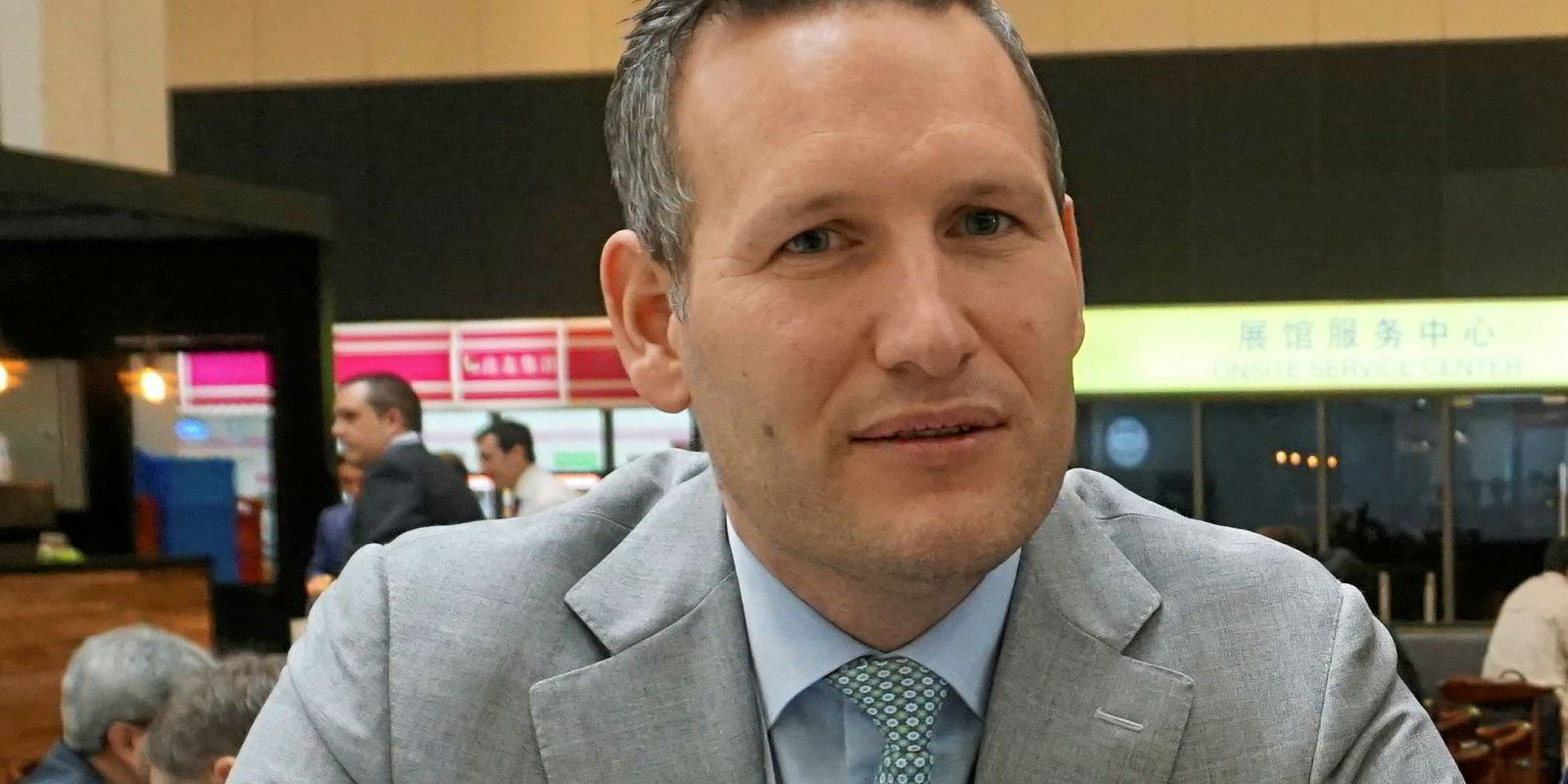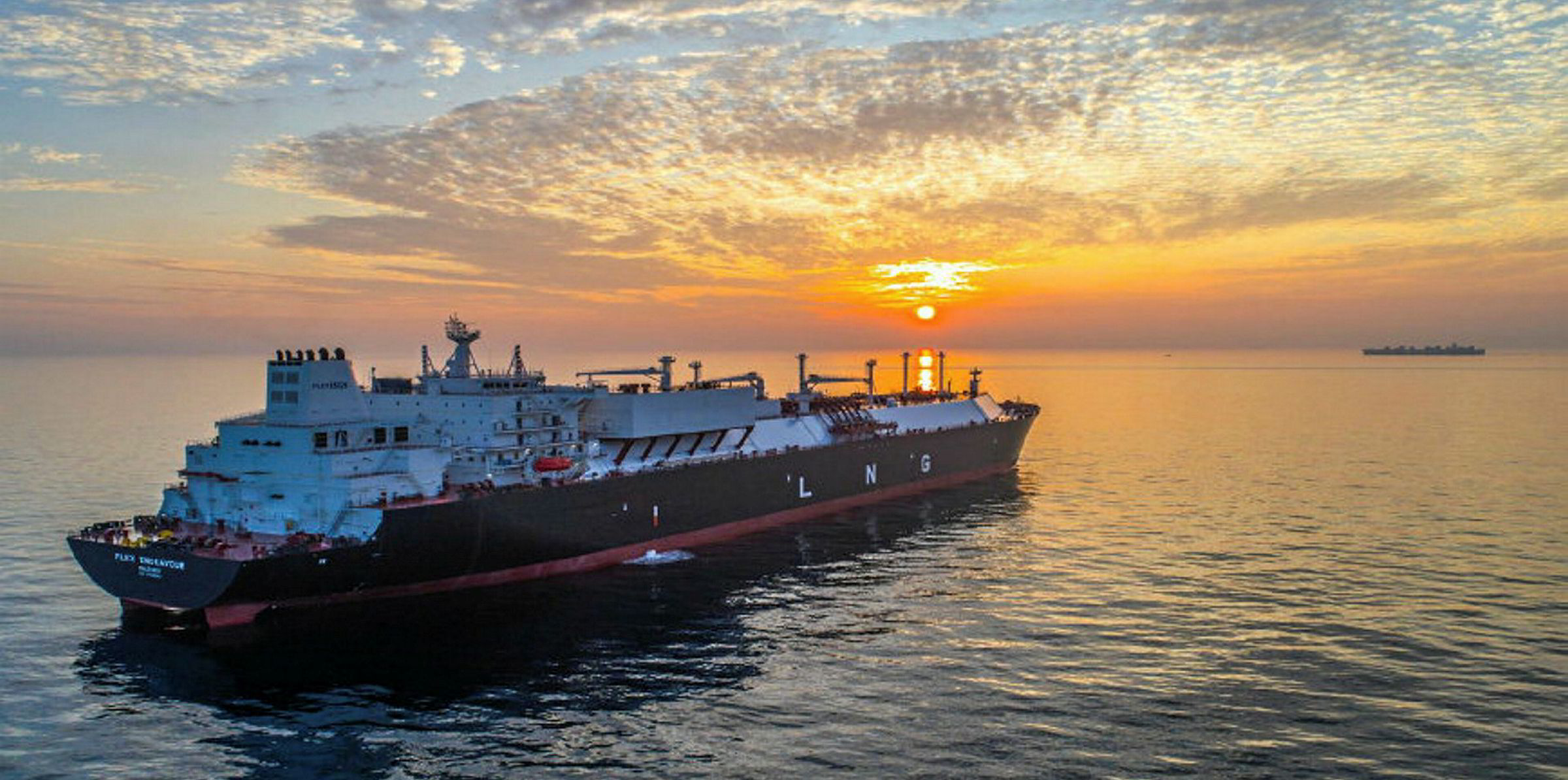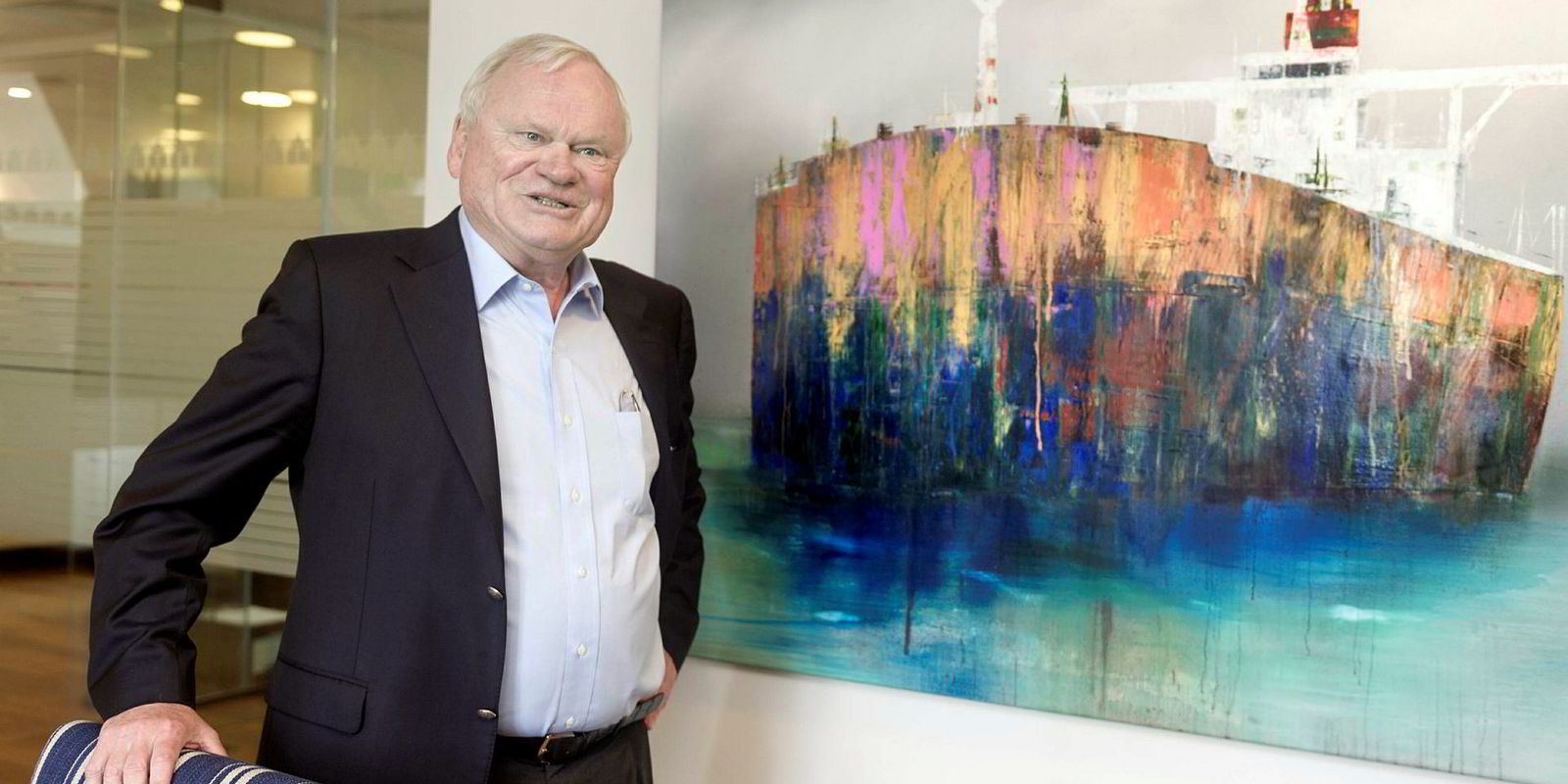John Fredriksen-controlled Flex LNG is taking an open approach to its chartering strategy as it markets its nine open newbuildings.
Chief executive Oystein Kalleklev, who spoke to TradeWinds at the LNG2019 meeting in Shanghai, said the company sees there are three uncommitted LNG newbuildings delivering this year of which Flex controls two of them.
Kalleklev said the company has no set chartering formula for its vessels.
“We don’t have any stone tablet,” he said. “We can do short [term]. We can do medium. We can do long. We can do whatever makes sense. We are flexible.”
Kalleklev, who was attending the Shanghai meeting with head of commercial Marius Foss, is quick to talk up Flex’s five 2020 deliveries. He said three of these are somewhat unique in that they have been built with reliquefaction systems, adding that most vessels built to this specification have generally been ordered against contract business.
Two of the ships have also been built with XDF propulsion systems, which he believes are some of the earliest uncommitted vessels of this type available.
Flex will take delivery of a further pair of newbuildings in 2021. “We have the best menu in town when it comes to vessels,” he said.
Kalleklev says there is widespread belief that the market will be tight, which is why the industry is seeing a big deviation between spot and term charter rates for LNG carriers. But he thinks spot levels will be dragged up by the term business enquiries.
“There is still ample supply of vessels chasing cargoes,” he said. “We see utilisation levels bottomed out in mid-February but we need to get to a certain level of utilisation before spot rates move.”
He does not feel under pressure having nine open ships because of the interest being shown in the company’s ships.
Flex currently has four LNG carriers on the water, of which two are fixed on 12 month charters with extension options with the other pair fixed on shorter-term deals.
Last week, the company filed a draft registration for its planned US listing.
Kalleklev said the move is less about the need to raise cash but more about creating liquidity in the company’s stock and giving US investors the ability to invest in the company.
“When we started in 2017 we had two newbuildings. Two years later, we have $830m of equity on our balance sheet and 13 vessels,” he said. “Having that kind of balance sheet and the sponsors’ support really gives us the flexibility to have this chartering strategy.”







